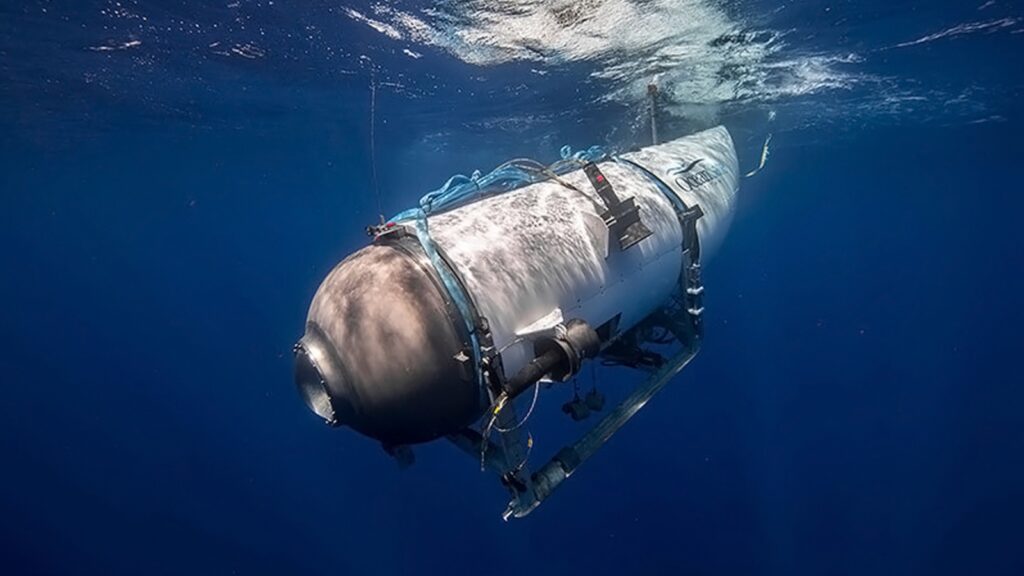
Officials Confirm ‘Banging Noises’ Continued Wednesday in Search for Missing Sub
Authorities have confirmed “banging noises” continued into Wednesday in the search area where a submersible disappeared Sunday on a mission to explore the Titanic wreck site. At a press conference Wednesday afternoon, Capt. Jamie Frederick of the First Coast Guard District in Boston said the noises were first detected Tuesday. “A Canadian P3 detected underwater noises in the search area,” he said, adding, “It is my understanding that the P3 heard noises today, as well.” Efforts by remote-operated vehicles to identify the origin of the noises have been unsuccessful so far, he added, but are continuing. Carl Hartsfield of the Woods Hole Oceanographic Institution confirmed the sounds have been described as “banging noises.”
The announcement comes the day after Rolling Stone reported “banging” sounds had been detected by a P8 aircraft coming from the search area at 30 minute intervals, based on internal Department of Homeland Security emails sent Tuesday morning. At Wednesday’s briefing, in response to a question about the 30-minute intervals, Frederick said, “I hadn’t heard 30 minute intervals,” and added that the data had been sent immediately to the Navy for analysis, where it proved “inconclusive.” “The important piece is we’re searching in the area where the noises were detected,” he said.
Searchers have now covered a surface area twice the size of Connecticut, Frederick said, and have searched underwater to a depth of 2.5 miles. Frederick also state that a white rectangular object found during the search was investigated and that officials don’t believe it’s related to the Titan. “We went back, we went looked at it, we didn’t determine it to be debris,” he said. “We don’t think it’s correlated to the case.”
Another issue of increasing urgency is the capabilities of ROVs that need to be powerful enough to descend to the pressure-packed depths of the ocean, depending on where the submersible is located. Before it disappeared, the submersible, called Titan, had been bound for the wreckage of the Titanic, which rests in 12,500 feet of water, or more than 4,000 meters. On Tuesday, members of the travel and research group the Explorers Club, two of whom were onboard the Titan, were urging the U.S. government to accept help from a U.K. company whose ROVs recently made 3D scans of the Titanic site. “A team out of the U.K. named Magellan has an ROV rated for 6,000 meters which is loaded on a plane and ready and waiting to help,” the email stated. “BUT THE US GOV and USCG have not yet given them permits to participate!” Magellan likewise offered its help on its website, saying “We are ready to support, and we are fully mobilized to help.” A series of emails among Navy officials obtained by Rolling Stone showed officials on Tuesday decided against using Magellan because its equipment would be “redundant” and also arrive too late. The Navy did not immediately respond to a request for comment.
At the press briefing, Frederick said the Coast Guard appreciates “the outpouring of support and offers to provide additional equipment,” and said they would continue to “prioritize assets and resources in order to provide the best capability in the most timely manner.”
Frederick said the Coast Guard had two ROVs searching that can descend to 4,000 meters, and “several more” with additional depth capabilities en route, set to arrive by tomorrow morning. Given previous estimates of how much oxygen was available onboard the Titan, passengers would be due to run out of breathable air right around that time. The Coast Guard urged the public not to look at that timing as completely definitive, however. “That’s just one piece of data,” Frederick said. “There are a lot of pieces of data we need to consider…. That’s not the only thing that’s important.” He added that the Coast Guard continues to consider this a search and rescue mission, saying, “We need to have hope.”



